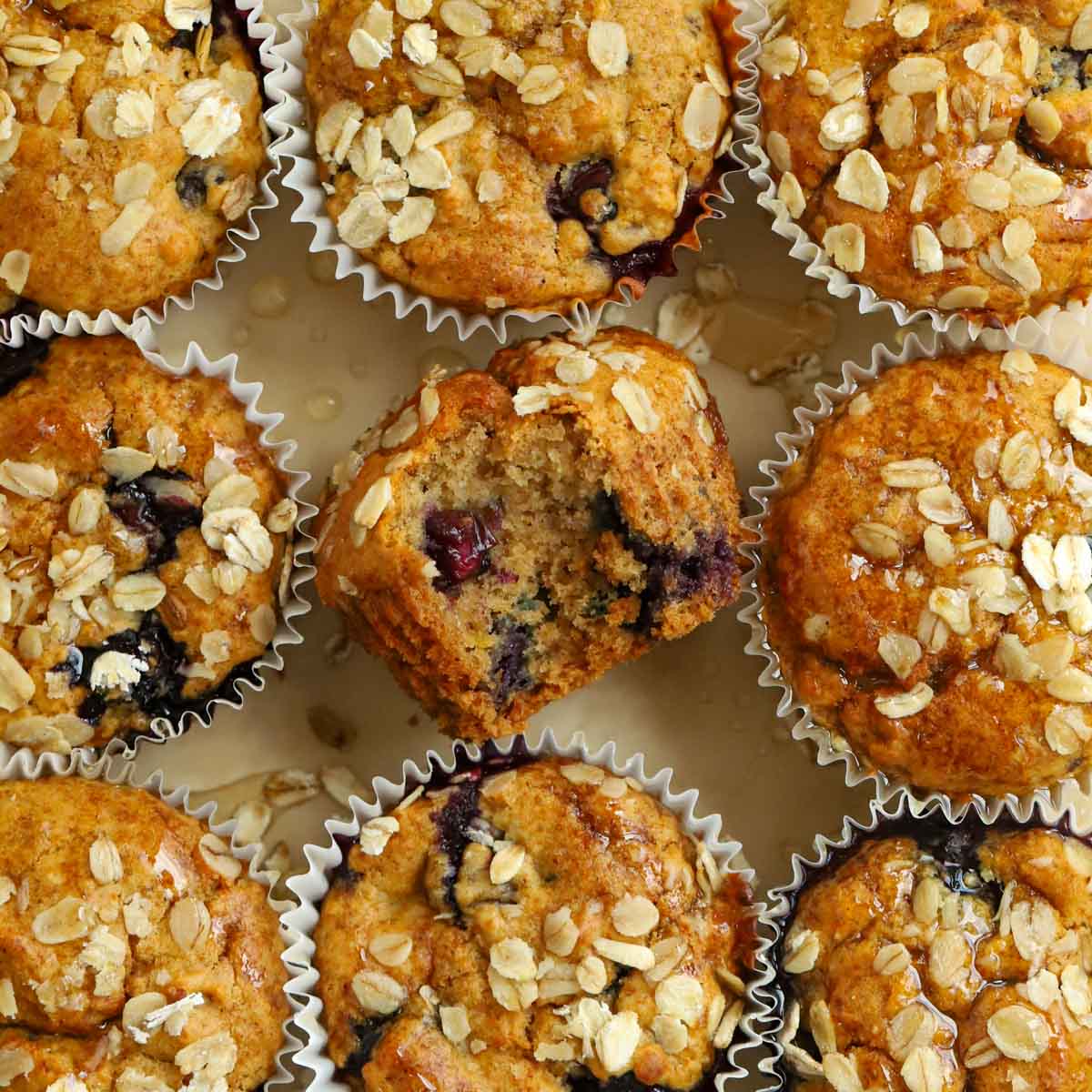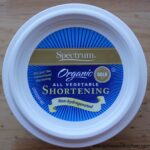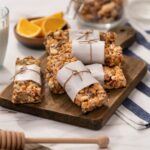Jumpstart your mornings with the delightful convenience of make-ahead soy-free breakfast muffins! This comprehensive guide unveils three unique recipes, each bursting with flavor and tailored to diverse dietary needs. Imagine a week brimming with effortlessly delicious and nutritious breakfasts, crafted in advance to conquer even the busiest mornings. We’ll explore ingredient substitutions, storage techniques, and creative serving suggestions, transforming your breakfast routine from mundane to magnificent.
From savory delights to sweet and fruity explosions, these muffins cater to every palate. Learn how to achieve the perfect texture, whether you prefer a tender crumb or a delightful chew. We’ll cover everything from adapting recipes for gluten-free or dairy-free diets to mastering the art of freezing and thawing for optimal flavor retention. Get ready to elevate your breakfast game and savor the deliciousness all week long!
Ingredient Substitutions & Alternatives
Creating delicious and nutritious soy-free breakfast muffins requires careful consideration of ingredients. Many common muffin recipes contain hidden sources of soy, so understanding substitutions is key to achieving a truly soy-free result. This section will detail common soy-containing ingredients and their suitable replacements, explore the effects of different flours, and offer guidance on adapting recipes for various dietary needs.
Soy-Containing Ingredients and Their Replacements
Soy is a surprisingly versatile ingredient, often lurking in unexpected places within processed foods. Knowing which ingredients to avoid and how to substitute them is crucial for maintaining a soy-free diet. The following table provides a clear overview of common soy-containing ingredients found in many breakfast muffin recipes and their suitable replacements.
| Soy-Containing Ingredient | Soy-Free Replacement |
|---|---|
| Soy lecithin | Sunflower lecithin, or omit (may slightly affect texture) |
| Soy flour | Almond flour, oat flour, coconut flour, or a blend |
| Soy milk | Almond milk, oat milk, coconut milk, or dairy milk (if not dairy-free) |
| Soy sauce (in savory muffins) | Coconut aminos, tamari (if gluten-free isn’t a concern), or a combination of apple cider vinegar and maple syrup for a similar savory-sweet flavor profile. |
| Textured soy protein | Shredded zucchini, finely chopped nuts, or seeds for added texture and protein |
Impact of Different Flours on Muffin Texture and Taste
The choice of flour significantly impacts the final texture and taste of your soy-free breakfast muffins. Each flour type offers unique characteristics that can be leveraged to create muffins with different mouthfeels and flavor profiles.
Almond flour, for example, produces muffins with a slightly dense and cake-like texture, and a subtly nutty flavor. Oat flour results in muffins with a more tender crumb and a mild, slightly sweet taste. Coconut flour, on the other hand, yields muffins that are denser and more absorbent, requiring careful attention to liquid ratios. It also imparts a distinct coconut flavor that might not be suitable for all recipes. Experimenting with flour blends can help achieve the desired balance of texture and taste. For instance, a blend of almond flour and oat flour often creates a lighter and more tender muffin than using either flour alone.
Adapting Recipes for Dietary Restrictions
Creating soy-free breakfast muffins that also cater to other dietary restrictions, such as gluten-free or dairy-free, requires careful ingredient selection and recipe adjustments.
Gluten-Free Adaptations
To make gluten-free muffins, simply replace all-purpose flour with a gluten-free blend. Many commercially available gluten-free flour blends are suitable for baking, providing a good structure and texture. It’s often recommended to increase the amount of binding agent like xanthan gum or guar gum (1/2-1 teaspoon) in the recipe to compensate for the lack of gluten.
Dairy-Free Adaptations
Dairy-free muffins can be easily achieved by replacing dairy milk and butter with their plant-based counterparts. Almond milk, oat milk, or coconut milk are all excellent choices for liquids. For butter, you can use vegan butter sticks or refined coconut oil, which provide a similar fat content and texture. Remember to check that any other ingredients, such as baking powder or chocolate chips, are also dairy-free.
Storage & Freezing Guidelines

Proper storage and freezing techniques are crucial for preserving the deliciousness and quality of your make-ahead soy-free breakfast muffins. Following these guidelines will ensure you enjoy these convenient treats throughout the week, or even longer. Freshness and texture are key factors to consider, and these steps will help maintain both.
Storing your muffins correctly will significantly impact their shelf life and overall enjoyment. Airtight containers are your best friend, preventing them from drying out and absorbing odors from the refrigerator.
Refrigerator Storage
Store your cooled muffins in an airtight container in the refrigerator. This method is ideal for maintaining freshness for up to five days. Imagine biting into a muffin that retains its moist crumb and delightful flavor – that’s the goal. The airtight container creates a barrier against air exposure, which is the primary culprit for staling. Avoid storing them in a loosely covered container or uncovered, as this will lead to rapid drying and a stale texture.
Freezing Muffins for Extended Storage
Freezing your muffins extends their shelf life considerably, allowing you to enjoy them for weeks to come. First, allow the muffins to cool completely before freezing. This prevents condensation, which can lead to ice crystals and a soggy texture upon thawing. Next, wrap each muffin individually in plastic wrap to create an airtight seal. This individual wrapping is crucial for preventing freezer burn, which can dry out and affect the taste of the muffins. Finally, place the individually wrapped muffins in a freezer-safe bag or container, removing as much air as possible before sealing. This double layer of protection ensures maximum freshness during storage. Picture perfectly preserved muffins, ready to be enjoyed at a moment’s notice. The individual wrapping minimizes the impact of freezer burn on each muffin.
Thawing Frozen Muffins
Thawing your muffins properly is essential for maintaining their texture and taste. The best method is to thaw them overnight in the refrigerator. This slow thaw allows the moisture to redistribute evenly throughout the muffin, resulting in a softer, more enjoyable texture. Alternatively, you can thaw them at room temperature for a quicker method, approximately 1-2 hours depending on the ambient temperature. Avoid microwaving, as this can result in a rubbery texture and uneven heating. The refrigerator thawing method ensures a consistent texture, mimicking the experience of a freshly baked muffin. The room temperature thaw is a convenient option for a quicker, but less controlled, method.
With this guide, you’re equipped to create a week’s worth of delicious, soy-free breakfast muffins tailored to your preferences. From the initial mixing of vibrant batters to the golden-brown perfection of the baked muffins, each step is detailed to ensure success. The versatility of these recipes allows for endless customization, ensuring a diverse and exciting breakfast experience throughout the week. Embrace the convenience and enjoy the deliciousness!
Clarifying Questions
Can I use different types of sweeteners in these recipes?
Absolutely! Maple syrup, honey, or even sugar substitutes like stevia or erythritol can be used in place of the suggested sweetener, depending on your dietary preferences and desired level of sweetness. Adjust the amount to taste.
How long can I store the muffins at room temperature?
For optimal freshness and food safety, it’s best to store the muffins in the refrigerator or freezer. Room temperature storage is not recommended for more than a few hours.
What happens if I overmix the batter?
Overmixing can result in tough muffins. Aim for a gently mixed batter to maintain a light and tender crumb. A few lumps are perfectly acceptable.
Can I add chocolate chips or nuts to the recipes?
Yes! Feel free to experiment with adding chocolate chips, nuts, seeds, or other mix-ins to customize the flavor and texture of your muffins. Just be mindful of the added calories and potential dietary restrictions.


